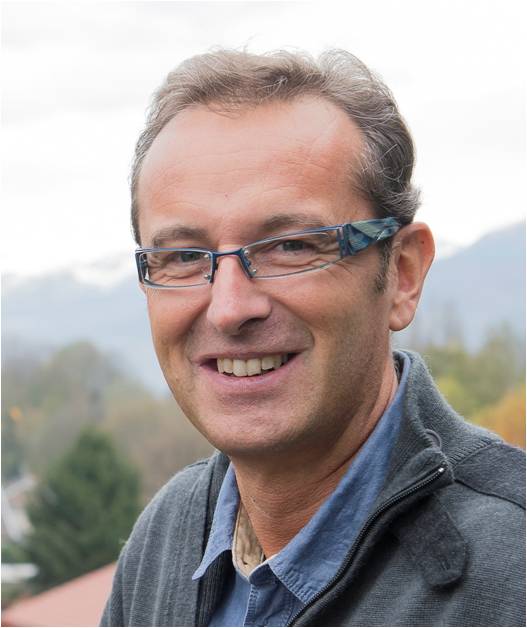Dr Jérôme Chappellaz in Hong Kong on December 4, 2015 [fr]
On the 4th of December 2015, come and join the two events animated by Dr Jérôme Chappellaz about climate change!
In the midst of the COP21 Climate Summit in Paris, Dr Jérôme Chappellaz (See his résumé below), senior scientist at the CNRS (Grenoble, France) and scientific advisor of the movie “Ice and the Sky”, gives a conference at the Chinese University of Hong Kong (CUHK) about the SUBGLACIOR project and presents the movie: « Ice and the Sky”.
These events - held by the CUHK Earth System Science (ESSC) department - are supported by the FONDATION BNP Paribas and co-organized by the ESSC and the Department of Culture, Education & Science of the Consulate General of France in Hong Kong and Macau.


- Conference “Insights on the mid-Pleistocene climatic transition : the concept and design of a revolutionary probe called SUBGLACIOR”
Time: 11:00am – 12:00am
Venue: Conference Room, 3/F, Mong Man Wai Building, CUHK
http://www.cuhk.edu.hk/sci/essc/seminar/Chappellaz_12042015.pdf
Enquiries: 39439624 essc@cuhk.edu.hk
Language: English
Registration: Free entrance for everyone
More information about Dr Jérôme Chappellaz and the SUBGLACIOR project below.
- Movie screening followed by discussion: « Ice and the Sky »
Time: 7:00pm – 9 :00pm
Venue: Room YIA LT8, 2/F, Yasumoto International Academic Park, CUHK (near the University MTR station.)
Enquiries: 39439624 essc@cuhk.edu.hk
Language: French with English subtitles
Registration: Free entrance for everyone, registration is recommended; please visit here (http://goo.gl/forms/F3GCrtd6rh)
The screening will be followed by a discussion (in English) on climate change and glaciers with Dr. Jérôme Chappellaz (CNRS Laboratoire de Glaciologie et Géophysique de l’Environnement), and Professor LIU Lin (Assistant Professor, ESSC, Faculty of Science, CUHK), a Hong Kong-based glaciologist.

This film, produced and directed by Luc Jacquet, director of the Oscar-winning March Of The Penguins, tells the life and the scientific accomplishments of Claude Lorius, who was among the first scientists who used ice core records extracted in Antarctica to study climate changes. For more information about the film, please visit (http://iceandsky.com/)
If you want to know more about the movie “Ice the Sky” and climate change through a beautiful, learning experience please, do not hesitate to join for the short animation movie screening “« The Secret held in the Ice » on December 5, 2015 at the French international School.
Date: December 5, 2015
Time: 12:00am-12:30pm: « The Secret held in the Ice » : Film screening
Venue: The French international school of Hong Kong, 34 Price Rd, Jardine’s amphitheater
![]() Documentary about the film « Ice and the Sky », in French then in English (15’ each)
Documentary about the film « Ice and the Sky », in French then in English (15’ each)
More information about the SUBGLACIOR project:
The mid-Pleistocene transition which took place about one million years ago is a period of time when the Earth experienced a major shift of its climate pace. It may be a key period to assess the climate sensitivity to changing greenhouse gas concentrations. The search for ice old enough in Antarctica allowing to reconstruct the past atmospheric composition has become a major challenge for ice core scientists: it is called the "oldest ice" challenge and it was initiated by the International Partnerships in Ice Core Sciences (IPICS). For this endeavour, new rapid-access drilling technologies through glacier ice need to be developed. These will provide the information needed to qualify potential sites on the Antarctic ice sheet where the deepest section could include ice that is >1Ma old and still in good stratigraphic order. Identifying a suitable site will be a prerequisite for deploying a multi-year deep ice-core drilling operation to elucidate the cause and mechanisms of the mid-Pleistocene transition from 40 ka glacial–interglacial cycles to 100 ka cycles.
As part of the ICE&LASERS/SUBGLACIOR projects, we have designed an innovative probe, called SUBGLACIOR, with the aim of perforating the ice sheet down to the bedrock in a single season and continuously measuring in situ the isotopic composition of the melted water and the methane concentration in trapped gases, two key signals for qualifying the site but also to understand the climatic processes at work. I will present the general concept of the probe, as well as the various technological solutions that we have favored so far to reach this ambitious goal, and lastly the current status of the probe construction and tests.

More information about Jérôme Chappellaz:
Dr. Jérôme Chappellaz is a senior scientist (Directeur de recherche) at CNRS. He conducts is research at the LGGE of Grenoble, France, a world-reknown laboratory specialized in glaciology and climate science. His research specialty is related with past climate changes and the evolution of the atmospheric composition, notably in terms of greenhouse gas concentrations, using ice cores drilled in polar ice caps and mountain glaciers. He and his team have notably reconstructed the past evolution of greenhouse gas concentrations back to 800,000 years ago. They have also determined the main causes of these evolutions, using the tools of isotope geochemistry. Currently Jérôme Chappellaz leads an ambitious European project funded by the European Research Council (ERC) to develop an innovative approach for studying the major climate change which took place at the time of the mid-Pleistocene transition, about one million years ago.
The research work of Jérôme Chappellaz has been recognized through numerous national and international awards. Notably the bronze and the silver medal of CNRS, the Niels Bohr medal of honor and the Shackleton medal. Since 2003, he belongs to the restricted list of the most highly cited researchers in geosciences. Dr. Jérôme Chappellaz is also Knight in the French national order of merit since 2010.
